The Patriot Hellfire M.2 480GB Review: Phison NVMe Tested
by Billy Tallis on February 10, 2017 8:30 AM ESTMixed Random Read/Write Performance
The mixed random I/O benchmark starts with a pure read test and gradually increases the proportion of writes, finishing with pure writes. The queue depth is 3 for the entire test and each subtest lasts for 3 minutes, for a total test duration of 18 minutes. As with the pure random write test, this test is restricted to a 16GB span of the drive, which is empty save for the 16GB test file.
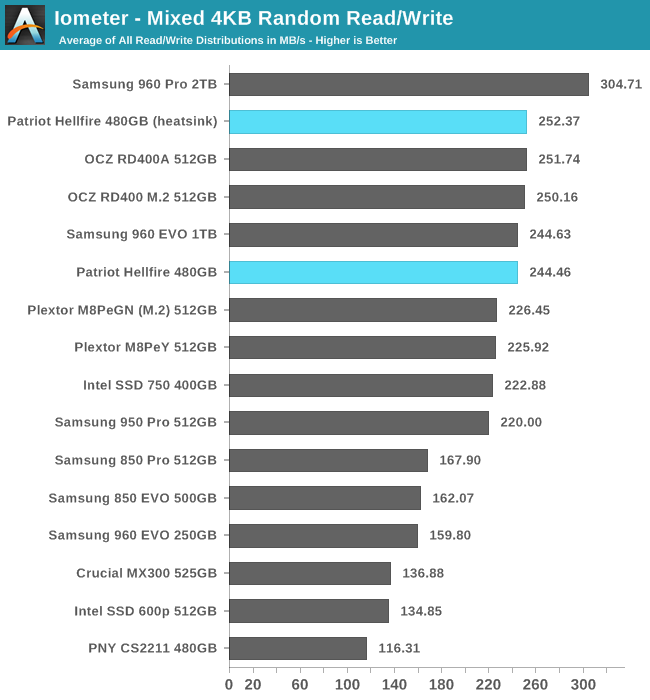
The Patriot Hellfire has great performance on the mixed random I/O test, tying the OCZ RD400 and falling behind only the much larger 2TB Samsung 960 PRO.
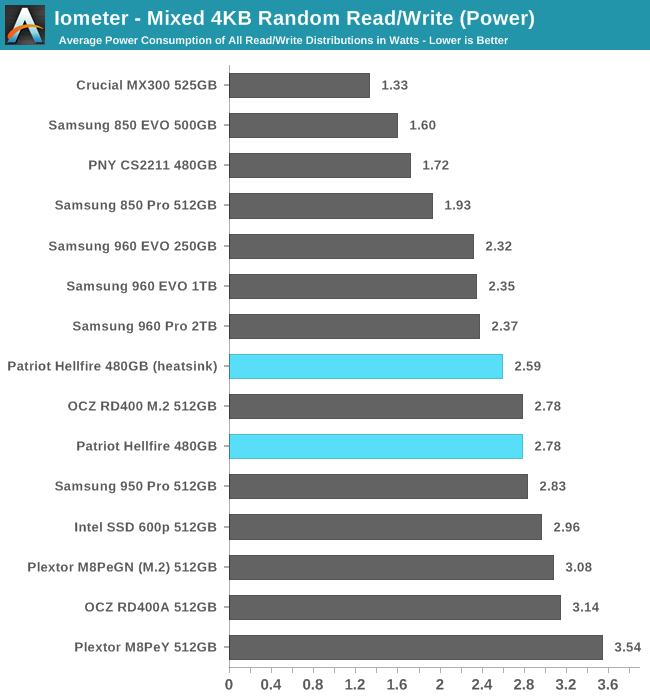
The Patriot Hellfire draws more power than the Samsung drives, but otherwise is one of the most efficient drives on the mixed random I/O test.
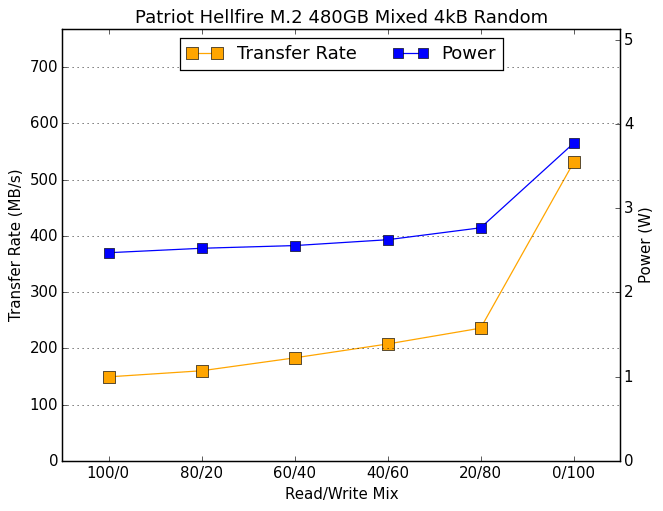 |
|||||||||
Performance increases slowly but steadily as the portion of cacheable writes increases, but the spike in performance when the workload shifts to pure writes is not as big as exhibited by some of the Patriot Hellfire's competitors.
Mixed Sequential Read/Write Performance
The mixed sequential access test covers the entire span of the drive and uses a queue depth of one. It starts with a pure read test and gradually increases the proportion of writes, finishing with pure writes. Each subtest lasts for 3 minutes, for a total test duration of 18 minutes. The drive is filled before the test starts.
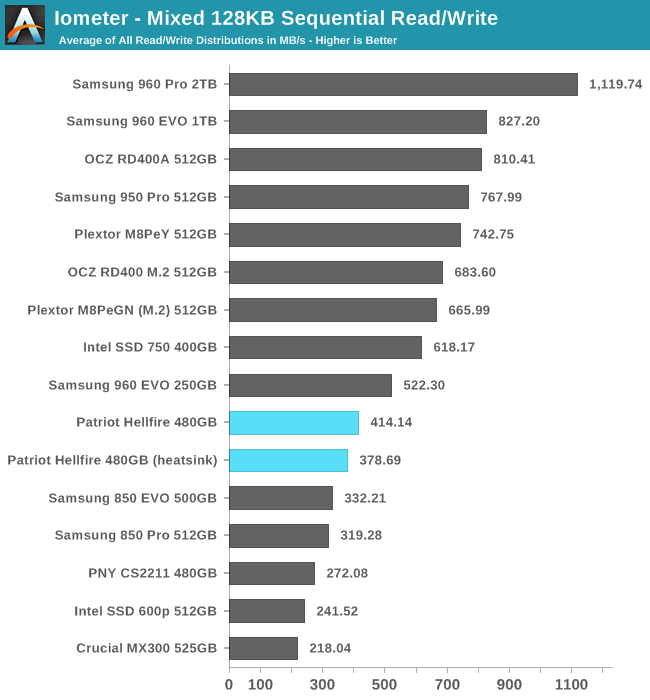
The Patriot Hellfire turns in the second-worst performance from a PCIe SSD, but at least it is still clearly faster than any SATA SSD. Even the 250GB Samsung 960 EVO fares better. This test is another sign that the Patriot Hellfire does poorly when full.
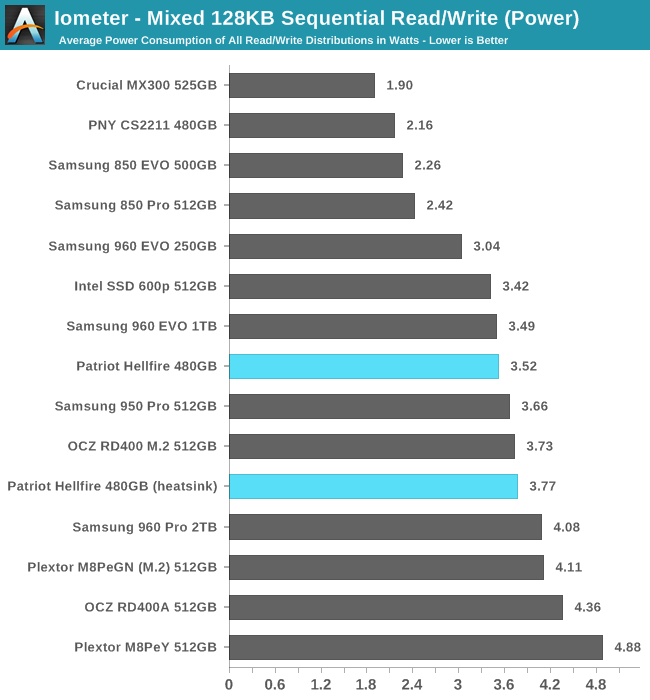
The Hellfire's power consumption across the mixed sequential I/O test is about average for an NVMe SSD, so its overall efficiency is fairly poor.
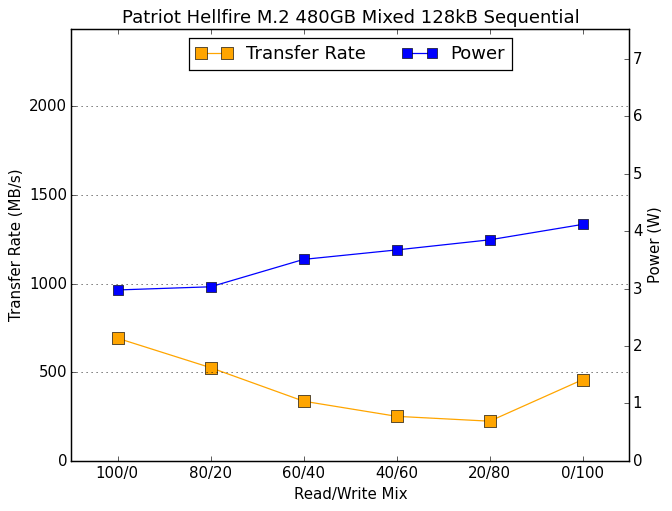 |
|||||||||
The addition of a heatsink only slightly improves the minimum performance of the Patriot Hellfire across the mixed sequential I/O test, and actually led to slightly reduced performance overall.










43 Comments
View All Comments
bug77 - Friday, February 10, 2017 - link
Patriot Minuteman! :DYaldabaoth - Friday, February 10, 2017 - link
Perhaps they are referring to the thermal characteristics.lmcd - Saturday, February 11, 2017 - link
"Logged in just to upvote this" -- comment systems in 2000extide - Saturday, February 11, 2017 - link
ehh back in that era "upvoting" wasn't a thing -- people would just say "this" or "x2"romrunning - Friday, February 10, 2017 - link
Looking at its performance, they should have named it the "Campfire"! :)BurntMyBacon - Monday, February 13, 2017 - link
I'm going to go with "Stinger" ... to keep consistent with the missile theme.Who is it that's getting stung again?
random2 - Sunday, February 12, 2017 - link
You got it. Seems kind of odd that a teck company marketing a retail product would use a naming convention associated with weapons being used around the world to kill and maim people. Wanna keep the politics away from your business? I vote with my dollar.Holliday75 - Monday, February 13, 2017 - link
We should petition the Pentagon to request they stop this practice of buying weapons with mean names as well. The Hellfire seems like a great platform, but we do not like the name. Call it Fluffy Kittens and we'll purchase 10,00 of them.Stas - Monday, February 20, 2017 - link
triggered?Gothmoth - Friday, February 10, 2017 - link
samsung all the way.. this stuff is just for cheapos.....